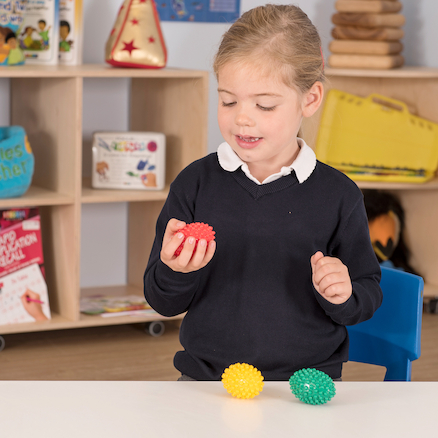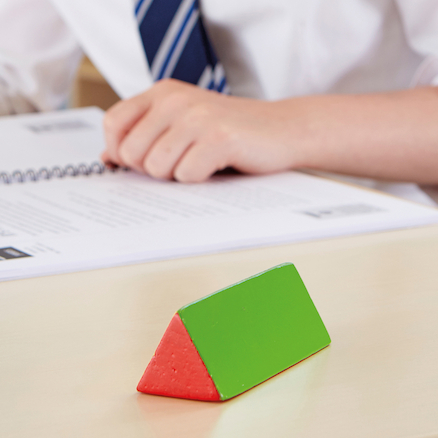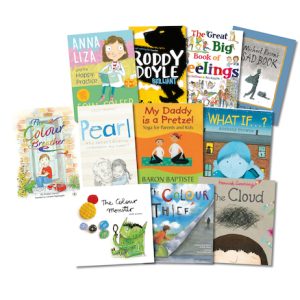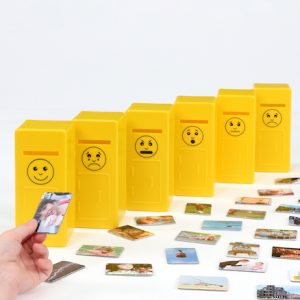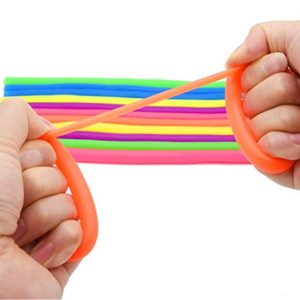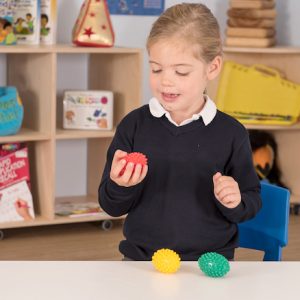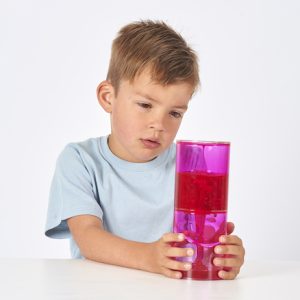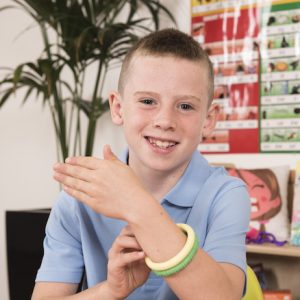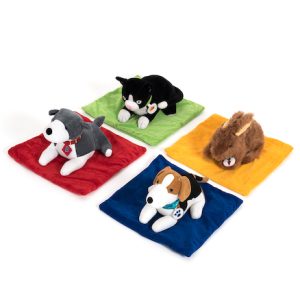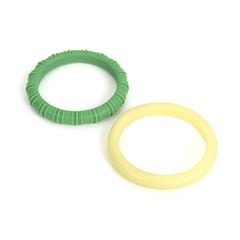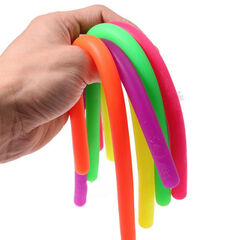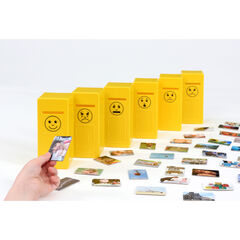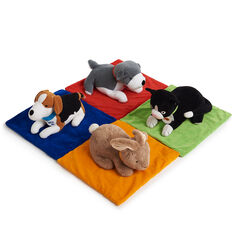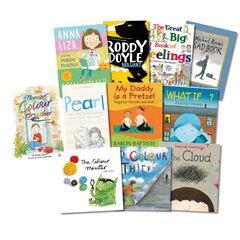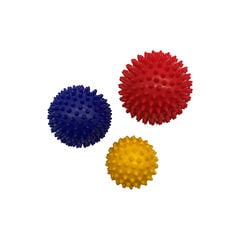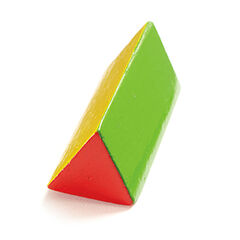This blog is part of a 6-part series. To find where you left off head on over to our wellbeing blog page.
Think back to my first article, where I wrote down what we want to see from our children in a mentally healthy classroom, ultimately we want them to be happy and thriving. Our goal as educators is to support them to become happy and thriving through the nurturing provision we provide. Some children will need very little support, whereas other children will need high quality 1:1 interventions to support their mental health and the majority will be somewhere in between.
Dealing with our mental health and being able to self-regulate is a skill, with strategies that needs to be taught and modelled to our children. It is not something they will necessarily do automatically, especially if they have been brought up to shy away from their emotions and not acknowledge their feelings.
Below I talk about some of the ways we can support the child in our mentally healthy classroom, with the goal being that eventually children will be able to support and self-regulate themselves independently the majority of the time.
Lego based therapy
Lego based therapy to support social, emotional and mental health (SEMH) is an intervention that is perfect for supporting pupils who find it difficult to tell you how they’re feeling. Through the use of open ended prompts, reflection and skilled questioning the adult can explore relationships, personal challenges, situations or emotions with the child supporting them to analyse and think about the emotions and mental state they are currently dealing with.
Resources to support
In a mentally healthy classroom talking about, modelling and prioritising good mental health at an age-appropriate level will happen daily. For example, you may have a dedicated sensory space within the classroom that children can access as needed to support them to regulate. For top tips on how to set up a sensory space check out my article on ‘Creating an Effective Environment’. Children may also have access to more discrete items such as these fabulous hand massagers, playfoam putty or desktop communicator which enables them to identify, express and self-regulate in a more discrete way.
Talking about emotions
Whether you are working with younger or older children teaching them to be able to name their emotions is key to being able to tame them and maintain good mental health. You could do this through age-appropriate story books and character profiling. This Mental Health and Mindfulness Book Pack has some amazing suggested titles.
These are great stories to use to prompt discussion as a whole class, small group or 1:1. You could create an immersive play experience using these books as a theme, or base some of your writing activities around them to embed and discuss mental health across the curriculum.
Emotion posting
The emotion posting game from TTS is a great way to use images to prompt and provoke conversation around emotions. The child can physically post the image into the emotion post-box depending on how it makes them feel. I really like that the images used are real life images as the context becomes more apparent for children looking at them as well. This could be extended by asking children to draw their own images to post into each box. However, bare in mind children won’t be able to express how they’re feeling if they don’t yet understand the range of emotions so basic work on labelling each emotion shown in the image may be required first.
Sensory tools
Sensory tools are a really effective way of helping a child to self-regulate and feel ‘just right’ when in the classroom. Dependent upon their sensory needs they may be sensory seeking or sensory avoiding, in which case we would want to offer tools that can help them to regulate and feel calm or perk up a bit and feel ready to focus and learn again. A few of my favourite sensory tools to use in the classroom are: Glow rollers, stretchy string, hand massagers, sensory jumbo ooze tube, chewable fidget bangles and the lap buddy. You can create a sensory diet personalised to a child that they can access dependent upon their needs.
Self-monitoring and Self-Regulation
Self-monitoring is checking in with yourself so that you can recognise how you are. Self-regulation involves acting upon your findings from self-monitoring and then responding in order to control your own feelings, emotions and behaviour.
They require the ability to pay attention to relevant stimuli and then respond accordingly. We need to support children to be able to recognise where they are at in the moment, recognise when things are beginning to change for them (early warning signs) and know their own triggers. We need to have a range of well-rehearsed strategies that the pupil can use and a mutual understanding of shared vocabulary that is used to name and identify the emotions the child is feeling.
Some children will need support to be able to self-monitor and self-regulate and I’m going to share some of my favourite ideas for doing this below:
Self-regulation chart
A self-regulation chart is a great way to do this. Self-monitoring and self-regulation is more than just pointing to a smiley face to indicate you’re happy, it’s linked to developing learning to learn skills, independent behaviour management, managing sensory needs and managing our emotions which is why we need to support our pupils to be able to do this.
It’s really important to emphasise that with a self-regulation chart it needs to be personalised to that unique and individual child – every single piece. From whether you choose to use images or words right through to the language used and the strategies identified. When using a self-regulation chart, sit with and work with the child to agree and complete the chart together. They will have more ownership and it will also be the exact things planned they need to help them. What soothes one of us, may completely irritate another – our sensory sensations and what helps us to self-regulate is so personal to us.
Desktop communicator
A simpler version of this is the desktop communicator which simply allows a child to change it to the colour that represents how they feel. What each colour represents would need to be discussed and agreed with the child beforehand as although green may be a positive colour to you, it may represent a different emotion to that child.
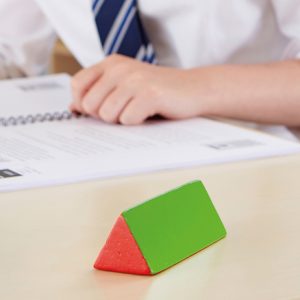
Timers
A timer can be useful in supporting a child to transition back to the learning if they have had some time out to focus on their mental health. I particularly like this spiral liquid timer as it also has a sensory and calming element to it.
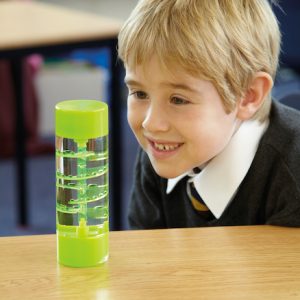
Journaling
Mindfulness, relaxation strategies and journaling in particular are a great way to support the children within our classroom as it helps with their resilience building. Resilience is what keeps us going and for many children can be the one skill that helps them to go from surviving to thriving.
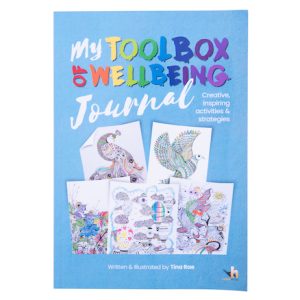
The toolbox of wellbeing journal is full of activities, colouring, doodling pages, breathing activities and strategies to support individual children to switch off from their worries and anxieties and switch on to practising mindfulness and journaling. For key children, they could each have their own journal to use within the classroom as/when required and could be a strategy identified on their self-regulation chart. I would also allow them to take this journal home so they can capture emotions and support their self-regulation at home. You could then spend time reflecting on their journal with them daily or weekly as required.
NAT bashing
One of my favourite strategies for supporting the child in your mentally healthy classroom is NAT bashing (Negative Automatic Thoughts).
You sit with the child 1:1 and have a number line in front of you from 1- 10. You first ask the child to identify on the number line how anxious they are feeling about something which is on their mind. They may initially circle a 10 for really anxious or struggling. You get them to explain their current thought and ask what evidence they have for this thought. Allow them time to talk and process. Once they have done this, together you try to challenge the thought. What evidence is there against this thought? You may have to come up with suggestions here. You then ask them what would they say to a friend who had this thought?
Go through the process together and then get them to reassess where they would be on the number line. Is their anxiety still extremely high or have they revised their feelings by going through and rationalising it with you?
With all of these strategies to support children in a mentally healthy classroom it’s important that they are rehearsed, modelled, understood and taught on a good day when the child / children are calm, happy and ready to learn.
Jump to Part 4.
With many thanks to Ruth Lue-Quee for writing this article for us.

Ruth is the founder of My Mummy Teacher, an educational brand that whole-heartedly believes in the power of play. My Mummy Teacher empowers parents and professionals to help their children learn through play, through their best-selling Learning Through Play Cards and a range of additional products and services, that are uniquely adaptable for a wide range of abilities. Ruth is a highly qualified, former Deputy Headteacher of a primary school and has also worked in many aspects of Special Educational Needs including mainstream and additional resourced provision settings. She has considerable experience as a Senior Leader and is passionate about teaching, learning and inclusion within KS1 and EYFS. As well as running My Mummy Teacher, she proudly works in partnership with Cadmus Inclusive as an Inclusion Consultant and regularly writes as an expert for businesses, companies and in the press on Educational and Parenting matters.


